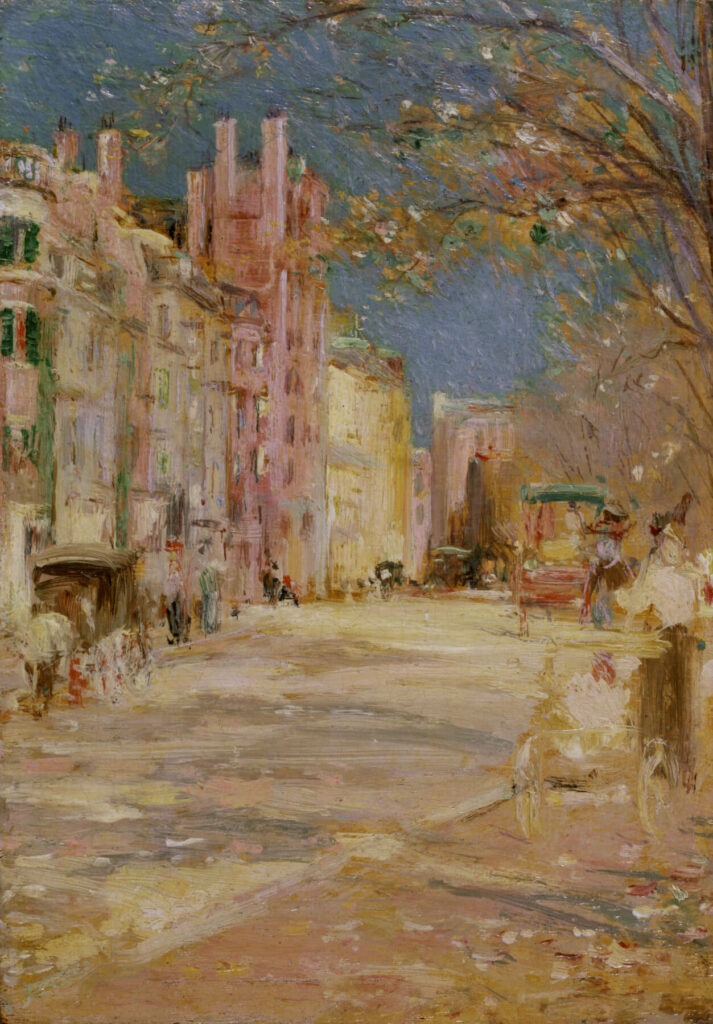Among the last works by Bannister before his death in 1901, this vibrant cityscape exemplifies the artist’s foray into Impressionism and the brightening of his colour palette in the 1890s. The left side of the street is lined with colourful buildings, while the right side is populated with trees displaying the colours of autumn. The pinks, yellows, and oranges that dominate the composition create a warm and inviting atmosphere, while the loose brushstrokes evoke a world in motion. Bannister’s Impressionist works are a major departure from the earlier muted pastoral landscapes that dominate his oeuvre. This development may seem all the more surprising given that in the 1880s Bannister spoke of his dislike of Impressionism with fellow Providence artist Charles Walter Stetson (1858–1911). However, always attuned to the atmosphere of a place, Bannister may have concluded that Impressionism best captured the spirit of the Boston cityscape.
Artist and Abolitionist
-
Edward Mitchell Bannister, Boston Street Scene, 1898–99
Oil on panel, 20.3 x 13.9 cm, Collection of the Walters Art Museum, Baltimore, Museum purchase with funds provided by the Eddie and Sylvia Brown Challenge Grant and matching funds for the acquisition of African American Art, 2002 (37.2766).
